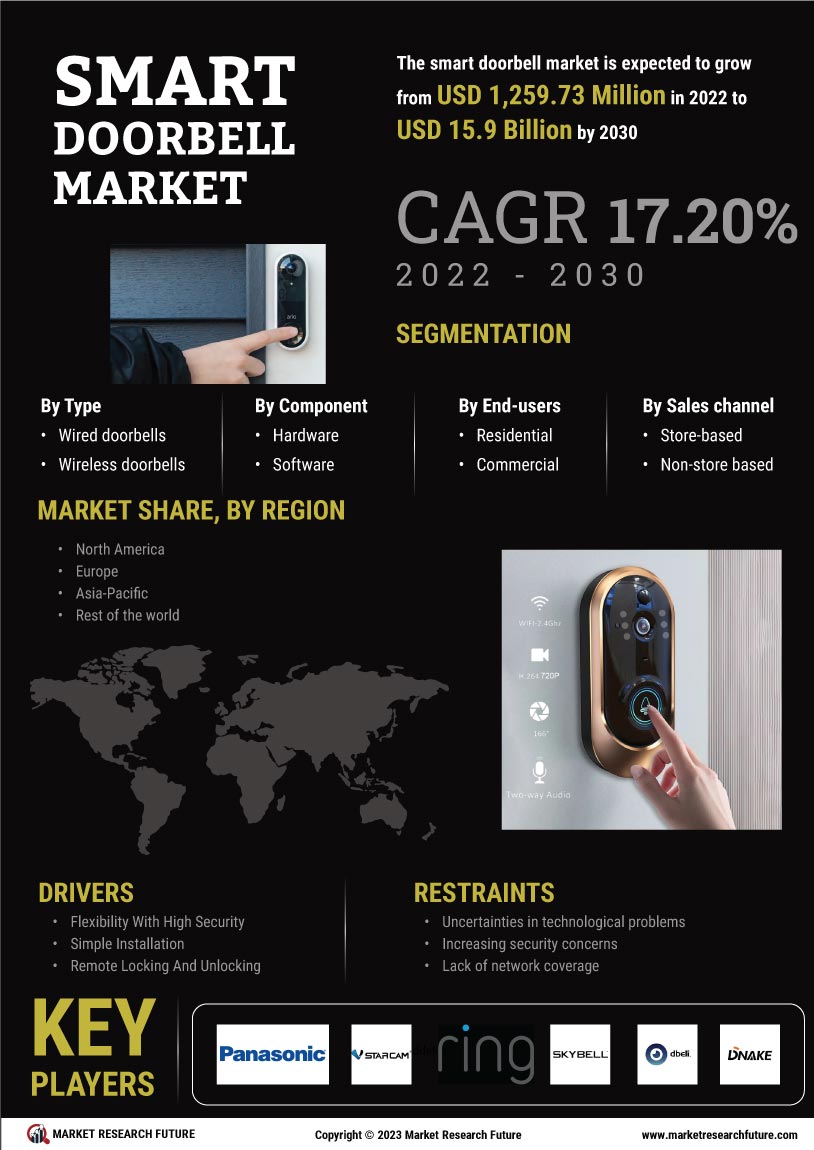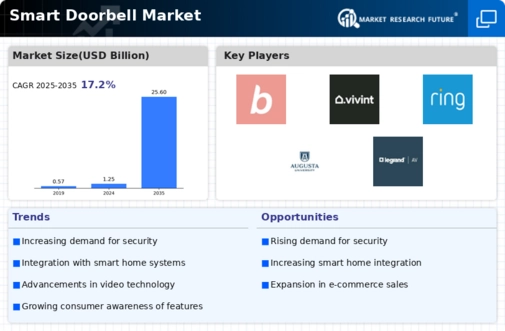Market Growth Projections
The Global Smart Doorbell Market Industry is projected to experience remarkable growth in the coming years. With an anticipated market value of 1.25 USD Billion in 2024, the industry is set to expand significantly, reaching an estimated 25.6 USD Billion by 2035. This growth trajectory suggests a robust compound annual growth rate (CAGR) of 31.58% from 2025 to 2035. Such projections indicate a strong consumer demand for smart doorbells, driven by factors such as technological advancements, increased urbanization, and heightened security concerns. The market's expansion reflects the evolving landscape of home security solutions and the increasing integration of smart technologies.
Rising Demand for Home Security Solutions
The Global Smart Doorbell Market Industry experiences a notable surge in demand for enhanced home security solutions. As homeowners increasingly prioritize safety, smart doorbells equipped with video surveillance and motion detection features become essential. This trend is underscored by the projected market value of 1.25 USD Billion in 2024, reflecting a growing consumer inclination towards smart home technologies. The integration of advanced features such as two-way audio and cloud storage further enhances the appeal of these devices, making them a preferred choice for security-conscious consumers. Consequently, the industry is poised for substantial growth as more households adopt these innovative solutions.
Growing Urbanization and Population Density
Urbanization and increasing population density significantly influence the Global Smart Doorbell Market Industry. As more individuals move to urban areas, the need for enhanced security solutions becomes paramount. Smart doorbells offer a practical response to the challenges posed by densely populated environments, where traditional security measures may fall short. The convenience of remote monitoring and the ability to interact with visitors from anywhere provide urban dwellers with peace of mind. This demographic shift is likely to drive demand for smart doorbells, as urban residents seek innovative solutions to enhance their home security in increasingly crowded living conditions.
Increased Adoption of Smart Home Ecosystems
The Global Smart Doorbell Market Industry benefits from the rising adoption of comprehensive smart home ecosystems. As consumers seek seamless integration of various smart devices, smart doorbells serve as a critical component of these ecosystems. The ability to connect with other smart devices, such as security cameras and smart locks, enhances the overall user experience. This interconnectedness not only improves convenience but also elevates security measures within households. As more consumers invest in smart home technologies, the demand for smart doorbells is expected to rise, further propelling the industry forward and contributing to a projected CAGR of 31.58% from 2025 to 2035.
Technological Advancements in Smart Home Devices
Technological advancements play a pivotal role in driving the Global Smart Doorbell Market Industry. Innovations such as artificial intelligence, machine learning, and improved connectivity options significantly enhance the functionality of smart doorbells. These advancements enable features like facial recognition and real-time alerts, which are increasingly appealing to consumers. As the market evolves, manufacturers are likely to incorporate cutting-edge technologies to differentiate their products. This focus on innovation is expected to contribute to the industry's projected growth, with an estimated market value of 25.6 USD Billion by 2035, indicating a robust trajectory fueled by continuous technological enhancements.
Consumer Awareness and Education on Smart Technologies
Consumer awareness and education regarding smart technologies are crucial drivers of the Global Smart Doorbell Market Industry. As individuals become more informed about the benefits of smart home devices, including energy efficiency and enhanced security, the adoption of smart doorbells is expected to rise. Educational initiatives by manufacturers and industry associations play a vital role in demystifying these technologies, making them more accessible to the average consumer. This growing awareness is likely to translate into increased sales and market growth, as consumers recognize the value of integrating smart doorbells into their homes.






